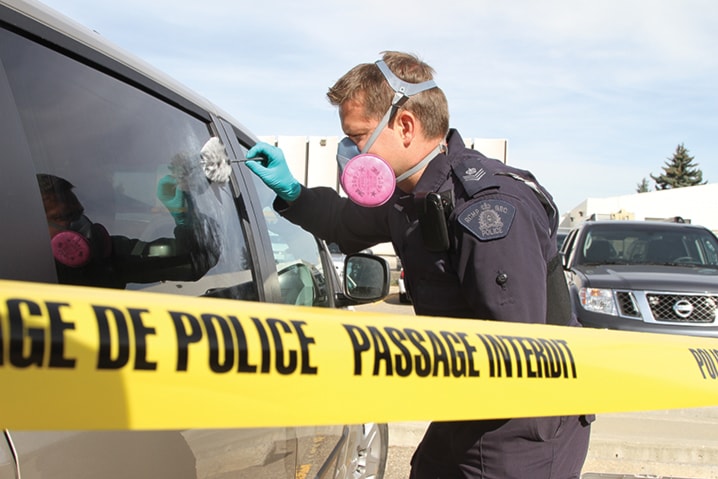These crime fighters owe a big debt to Sherlock Holmes.
You will not see them interview witnesses at a multi-vehicle pile-up on the highway or search for a suspicious person in a neighbourhood.
These officers scour a crime scene looking for clues that will ultimately put the bad guys behind bars, just as the fictional detective Holmes does in stories created more than a century ago by Arthur Conan Doyle.
Forensic identification specialists are trained to collect and analyze evidence left behind by criminals. It could be anything from a smear of blood on a piece of clothing, fingerprints on a window glass or a footprint impression.
The Red Deer Forensic Identification Services unit boasts about nine specialists who work for 20 RCMP detachments in the province. Alberta has 10 RCMP forensic identification units.
Red Deer RCMP Sgt. Steve Gruenberg, who is in charge of the unit, said they do not attend every crime scene but definitely those that may have some sort of forensic value.
A front-line police officer may go to a break-and-enter crime scene and find evidence that forensic investigators may be able to collect.
During his time in Fort McMurray, Gruenberg worked on a homicide investigation involving a single mother. A suspect broke into her residence and killed the woman. Police had a difficult time coming up with suspects.
“At that scene, I was able to develop footwear evidence, blood, fingerprints and DNA evidence that were later on associated to the suspect who was ultimately convicted,” said Gruenberg.
“Forensic evidence definitely helped because it was initially an unknown situation. It was a whodunnit type of scenario. In that case, the footwear and fingerprint evidence certainly helped that case develop a lot quicker than it might have otherwise.”
The forensic investigators are always called for the serious person crimes such as homicide or sexual assault, and often for property crimes.
In Red Deer, the volume varies, but Gruenberg said officers are usually out at a property crime scene every day.
Sometimes forensic evidence offers the only clue left at a scene, and that makes the investigators’ role crucial in solving crimes. In most cases, there aren’t video cameras recording the scene or witnesses to the crime.
Gruenberg did not have any statistics on the success rate but he estimated that more than half the time they can match a name to a foot impression or a fingerprint to a name.
“There isn’t a lot of adrenaline rushes in our jobs,” said Gruenberg. “We don’t race out to scenes very often. And we’re not apprehending the suspect. Within our job, we try to remain unbiased as possible. We’re not out to get anybody. We just take the forensic evidence and let it speak for itself.”
The investigators wear protective clothing to preserve the evidence from cross-contamination.
And they can be called in to provide expert testimony in court. Gruenberg said they can be challenged on their background and expertise.
The police veteran has worked on more than a dozen homicide investigations — everything from drug deals gone wrong to domestic situations.
The CSI effect has brought some exposure to the role of forensic evidence in police work. The original television show CSI and its spinoffs depict investigators who solve serious crimes over the span of a couple days within the hour-long program.
Gruenberg said the reality is that sometimes the fingerprint identification process can take days or weeks, depending on the evidence.
“The show brought exposure to the field, which I think (for) forensic evidence is very important,” he said. “Sometimes with witness statements people forget things. They see things from a different perspective. Forensic evidence itself can be interpreted in different ways but it certainly is speaking in an unbiased way. It doesn’t lie. That’s why forensic evidence is very important.”
crhyno@www.reddeeradvocate.com
